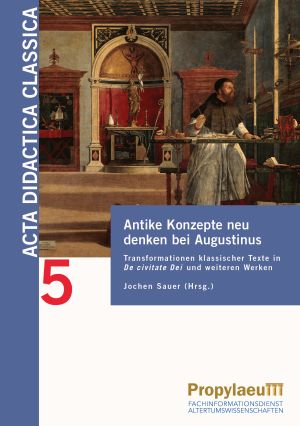Häger, Hans-Joachim
Antike Konzepte neu denken bei Augustinus: Transformationen klassischer Texte in De civitate Dei und weiteren Werken
Augustine’s writings and especially De civitate Dei are difficult to understand without knowing the texts, concepts and models of his predecessors. The authors of this volume focus primarily on the pagan authors Cicero, Ovid, Livius and Seneca and take a look at five concepts and theories: the Stoic theory of emotions, the Roman theory of the state, concepts of history, Roman ethics of exempla judgment and ancient friendship thinking. In addition to the scientific approach, the volume also offers didactic material for use in the upper grades of the Gymnasium. The volume is aimed equally at teachers and students from universities and schools.
Augustinus: De civitate Dei: Fachwissenschaftliche und fachdidaktische Zugänge
The work De civitate Dei by the philosopher of religion and church father Augustine of Hippo, written 413-426, links political theory, theory of society, individual ethics and theology of history in a multilayered way. Ancient philosophy is rethought from a Christian perspective. The five contributors to this collection take up the challenge to provide access to this sophisticated work and to show ways how school students especially as well as university students can be introduced to Augustine's political theory and philosophy of religion.
Rhetorik, Politik, Propaganda: Cicero und die Macht des Wortes
The five articles in this volume present Cicero's oratorial work and show ways in which Cicero and his rhetorics can be introduced to the world of pupils. All contributions are based on three speeches or speech corpora of Cicero that are central to school lessons: the speeches against Catiline, the speech for Sestius and the Philippine speeches. A detailed bibliography with reviews of relevant didactic publications concludes the contributions. A comprehensive appendix offers material for implementation in the classroom.









